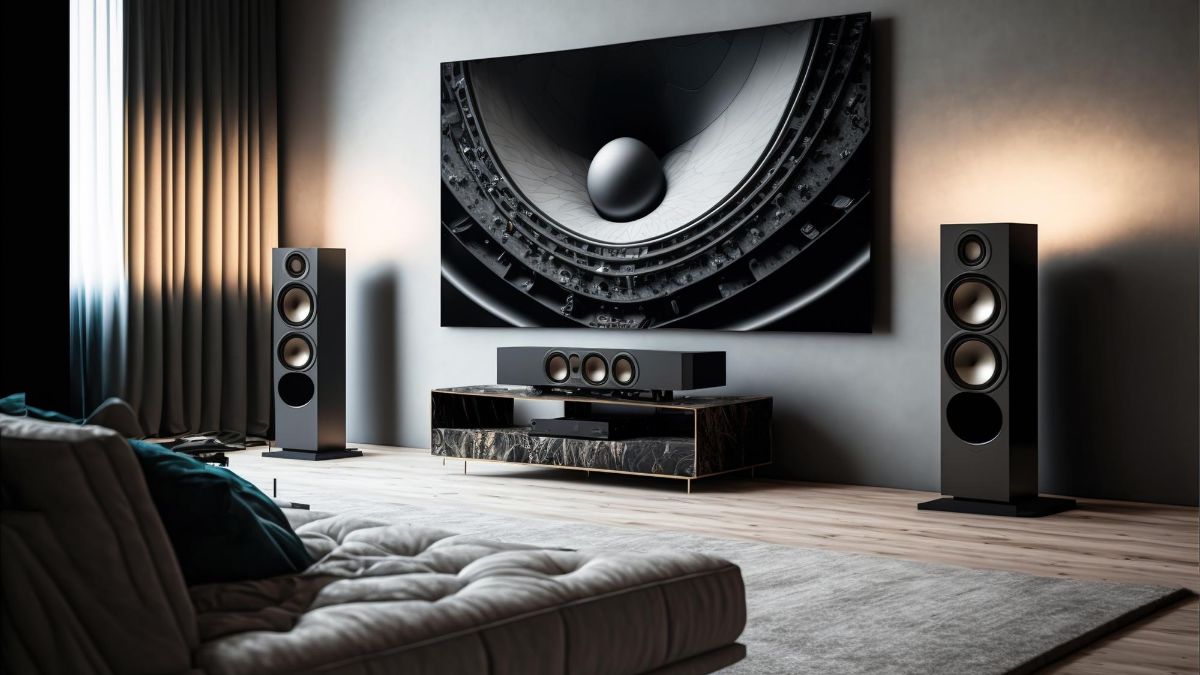
If you want the best sound quality from your home speaker system, you must set it up properly—several things to consider, such as the speakers’ number and placement.
Most receivers have built-in test tone generators and room correction systems to optimize your speaker set-up automatically. A sound meter is also useful for manual adjustments.
Decide on a Layout
There are several options for home speaker systems, from a basic two-channel stereo set-up to a ten-unit surround system with a subwoofer. Depending on the type of audio you enjoy and how you plan to use your system, you’ll want to decide how many speakers you need and where to place them.
A basic speaker layout for a home theater system consists of front left and right speakers, a center channel speaker, and a pair of rear-channel speakers. You may also choose to add Dolby Atmos modules or speakers, which create a 3-dimensional sound field by directing sound toward the ceiling and reflecting it to the listening area.
When positioning your front-channel speakers, it’s recommended that you get them within a few feet of each other. Then angle them toward your listening position so that each one forms the third point of an equilateral triangle with your seating position. The suggested angles are between 22 and 30 degrees from your listening position.
If you have a room with lots of hard surfaces like wood floors and concrete walls, they’ll cause sounds to echo and distort, which can diminish the quality of your sound system. You can mitigate this by adding soft materials like curtains or carpets to the room and furniture that breaks up long, smooth areas of the room.
Choose Your Speakers
Speakers are the bridge between your audio system’s electronics and the physical world in which sound waves travel, and a good pair can make the difference between cramped, muddy audio and crystal-clear concert-hall sound. Choosing the right speakers for your home can be overwhelming, given the variety of shapes, sizes, and prices available. However, with deals such as Bose coupons, you can have your own home speakers on a budget. It’s important to take your time and carefully choose to ensure you get the best value for your money.
First, consider what you will be using the speakers for. Are you planning a high-fidelity stereo music set-up for your vinyl records, or are you interested in a home theater surround system to complement your HDTV? A basic setup may only require a single smart speaker. A more elaborate system will require multiple speakers and an AV receiver.
Once you’ve narrowed down your requirements, consider your space. Is your home small enough for a 7.1 surround sound set-up, or can you fit in a more modest 5.1 set-up?
You’ll also need to think about the positioning of your speakers. Your front speakers (left and right) should be aligned with the viewer, and any rear-facing speakers should be positioned along the back wall. Any surround speakers should be positioned 2 feet above the couch and pointing downward to provide realistic sound imaging. Finally, only place speakers in a corner; this will skew the sonic balance and can be difficult to correct.
Connect the Speakers
Having the right equipment means little if you don’t connect it correctly. That’s why it’s essential to clearly understand the different cords and wires you’ll need for your system to run them properly and avoid problems.
Connect your audio source devices to the AV receiver. Most DVD, Blu-ray, and CD players have an Optical Digital Output or Coaxial Audio Output that you can connect to the audio inputs on your AV receiver.
Once your equipment is connected, you can start running the speaker wires throughout your home. Use CL-2 speaker wire, which is rated for running through walls. It will also help reduce heat loss that can compromise audio quality in hard-to-reach locations, such as behind the walls or in a crawl space.
Connect one end of the speaker wire to the red “output” terminal on your AV receiver and the other to the red “input” terminal on the back of each speaker. Repeat this process for all of the speakers in your system, including the center channel speaker, which goes under or above your TV screen and is meant to handle most of the acoustic information from video or concert audio tracks.
Adjust the Settings
A properly set up surround sound system will immerse you in your movies, TV shows, music, and video games. But the key to a great home speaker system isn’t just what you buy – it’s how you hook everything up.
A simple mistake, like connecting a speaker to the wrong output on the receiver, can cause distortion and ruin your audio experience. To prevent this, test each speaker before continuing. You can do this by playing a video and listening to the sound. If you hear any distortion, disconnect the speaker and try another to see if the problem disappears.
Next, connect the speakers to the AV receiver. You’ll need at least one wire for each speaker, although wireless options are becoming increasingly popular. You’ll also need a cable to connect your audio source(s), which can be anything from a Blu-ray player to a media streaming device or TV. Most AV receivers support several connections, so look on the back of your device and receiver to find out what inputs they use.




